Lets say I go back in time with a wallet full of, say, 150 dollars worth of bills. How far can I be sent back before I reach a point where I'm unlikely to be able to use my money because it looks too different from the current currency to be acceptable? What are the odds that I'll have some 'old' bills that are still in circulation which I could use even if some of my newer bills wouldn't be accepted?
10 Answers
With some planing (buying 20yo money), you can go back to ~1929. Without any, you can only go back to ~1996.
There's a pretty good chance of getting away with it, going as least as far back as 1929, assuming all your bills are from before 1996 (currency redesign), or even better, before 1990 (security thread and microprinting).
If your (large) bills are from after 1996, you outright cannot use them before that - that's when they started putting more color and giant pictures on them, making it look like play money. If there's a number one turning point to be named, '96 is it.
Your odds of getting a modern note past a cashier prior to 1996 are zero. It wasn't the smoothest transition even in '96 (the first significant design change since the 1920s); there was a lot of, wut dis?
Another answer suggests using entirely one dollar notes. I've no source to back this up (and I suspect if there is one, that it'd be treasonous or patent infringement, or some such), but I never remember cash being as crisp and starched as it commonly comes today. I'd bet money that the company that makes the paper, Crane & Co., changed a part of their proprietary process - somewhere in the '90s. Be sure your bills have been well circulated; good cashiers can spot fakes by their feel alone. Laundry it first, literally.
1929
Standardization of DesignThe appearance of U.S. banknotes changes greatly in 1929. In an effort to lower manufacturing costs, all Federal Reserve notes are made about 30 percent smaller—measuring 6.14 x 2.61 inches, rather than 7.375 x 3.125 inches. In addition, standardized designs are instituted for each denomination, decreasing the number of designs in circulation and making it easier for the public to distinguish between genuine and counterfeit notes.
1990
Security Thread and MicroprintingA security thread and microprinting are introduced in Federal Reserve notes to deter counterfeiting by copiers and printers. The features first appear in Series 1990 100 [dollar] notes. By Series 1993, the features appeared on all denominations except 1 and 2 [dollar] notes.
1996
Currency RedesignIn the first significant design change since the 1920s, U.S. currency is redesigned to incorporate a series of new counterfeit deterrents. Issuance of the new banknotes begins with the 100 [dollar] note in 1996, followed by the 50 [dollar] note in 1997, the 20 [dollar] note in 1998, and the 10 [dollar] and 5 [dollar] notes in 2000.
–The History of American Currency, uscurrency.gov
1928 (source)
1990 (source)
1996 (source)
These are from three different sources, so the colors don't match in the slightest, but I'd have a hard time telling which note is from 1928 or 1990. Between those two dates is a plausible window of opportunity, or thereabouts. In 1996, it's game over. Bills from after which (especially after 2009), you could flash the money at someone while driving by them at 100mph and they'd think you had Monopoly money.
As of 2017, the security features drop down menu for a $100 bill on US Currency's website is subdivided into these dates: 1914-90, 1990-96, 1996-2013, 2013-Present.
2009 (source)
I've seen an 'old' bill once in the past few years. A quick look in my wallet tells me that if I get sent back to before '96, then I'm washing dishes.
I've seen more then a few counterfeit bills in the last few years, and even though I've never been a cashier, I could feel they were fake. If I had to chose between trying to pass a counterfeit note and one from the future, I'd go with the one printed on the real paper, no matter how fundamentally their manufacturing process may have changed.
Bills need to look (basically) the same, and more importantly, feel the same. That's actually their best security feature IMO (or at least it was. Again, prior to 1996...). Go try and get your hands on some of the paper and see how far you get.
Trying to pass old notes can be equally changeling.
I received from my Dad 150 American Dollars about 12 years ago. [...] I tried to change it in a currency exchange in Sydney and the guy didn't change it because the series are old. –Converting Older United States Dollar Bills, Travel SE
Click that link to see 100 and 50 dollar notes from 1988. That's what cash looked like for nearly three quarters of a century.
-
4Fun fact: when the OSS sent undercover agents into France in WW2, they gave them new money but they needed it to look old, so they had the female agents and analysts carry it around in their bras to soften it. – MissMonicaE Jan 04 '17 at 16:03
-
"good chance of getting away with it, going as least as far back as 1929, assuming all your bills are from before 1996" -- How do you go back to 1929 with a bill printed in 1995? It will have "1995" printed on it, be made of different paper, and have a different design. Do you mean good chance getting away with it, but only if you're flashing the money at someone while driving by them? – Samuel Jan 04 '17 at 17:58
-
3It would be awesome if this answer includes picture to show the changes in designs (like pre 1929 / 1929-1990 / 1990-1996 / current) – Fabich Jan 04 '17 at 18:06
-
5@Samuel I've never once looked at the date on a bill. If you handed me or most store clerks a bill that said 2056 on it neither would notice. I think that was his point. – 8bitwide Jan 04 '17 at 18:10
-
-
5If you have sufficient time to plan ahead, old currency isn't terribly expensive. On http://papermoneyguide.com/us_currency_price_guide.php I see prices for $10 bills of the 1928 series ranging from $15 to $34 for "very good" (the lowest quality listed; and for this purpose, lower quality is usually better.) Considering what $10 in the 1930s was worth in today's dollars, I'd consider that a fantastic bargain. – David K Jan 04 '17 at 19:17
-
@Samuel, this is true, but seeing as how it won't have a different design as stated in OP's post; I choose to ignore the rest of your comment. But assuming the paper formula did change over time, I have $2 bills decades old and can't tell the difference between that paper and current paper either. – 8bitwide Jan 04 '17 at 19:30
-
@8bitwide It takes 2.7 decades before you'd have money old enough to compare. The OP states "microprinting" was introduced in 1990, that was a design change. – Samuel Jan 04 '17 at 19:32
-
3@Samuel microprinting requires extremely close examination to detect. Before it was invented, nobody would know to look for it in the first place. – Tim Sparkles Jan 04 '17 at 21:41
-
I wrote this answer and I don't even know what aspect the microprinting brings into the equation. But I don't remember cashiers holding up $100 bills to the light before the strip. Mom used to write a lot of checks, so maybe that's why I don't remember such a prolific use of money pens either, which I'm not sure when were invented, but it's interesting to note that, "The chemical properties of US banknotes prior to 1960 are such that marking pens do not work." – Mazura Jan 05 '17 at 00:09
-
1Uhm, about the comparison between 1928 and 1990, the difference in the "promise" ("Redeemable against gold ..." v/s "This note is legal tender ...") was blatantly obvious to me, without even thinking about it. But then, I am not American, so I don't see these notes often, and I also happen to be more observant than most people, so overall fair call. :) – Masked Man Jan 05 '17 at 06:54
-
@Mazura those iodine pens are actually flim flam. They detect uncoated paper, and laundry starch that rubs off in your shirt pocket. – JDługosz May 28 '17 at 03:42
According to the Federal Reserve, the average lifespan of bills is typically short:
- 1\$ bill: 5.8 years
- 5\$ bill: 5.5 years
- 10\$ bill: 4.5 years
- 20\$ bill: 7.9 years
- 50\$ bill: 8.5 years
- 100\$ bill: 15.0 years
I don't know what the probability distribution is, but I'd say it's highly likely that even if you carry around 150 1\$ bills, only a few are going to have been printed more than a decade or two in the past. Obviously, nobody's going to accept bills printed in the future (I'd assume); they'd appear to be counterfeit. Thus, you're limited more by when the bills were printed than by how old they look.
Now, the dates on 1\$ bills aren't easy to see at a glance. Try to find the date on this image of a 2009 bill:
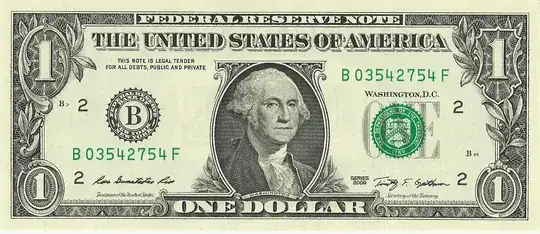
(source: wikimedia.org)
Image in the public domain.
Most people probably won't notice the date. However, bank tellers will, as might cashiers and others who handle money on a regular basis.
Various commenters have suggested that an exponential distribution is a more accurate representation of age: $$P(a)=\lambda e^{-\lambda a}$$ for some parameter $\lambda$. I'm inclined to trust them; I clearly was not thinking when I suggested a Gaussian distribution. I made the (incorrect) connection of mean lifetime $=$ most probable lifetime.
- 101,188
- 25
- 303
- 542
-
18OH OH I found the date! Also I think waldo is somewhere behind george washington :P – dsollen Jan 03 '17 at 22:20
-
2Not all currencies actually 'date' their bills. Would another currency provide better luck? OP only stated the 'worth' after all. – Weckar E. Jan 04 '17 at 11:40
-
2I'm fairly certain that the age of bills is not normally distributed. On the contrary, I'd assume that the underlying distribution is essentially one of exponential decay, mediated by how long it takes bills from a particular issue date to reach full circulation. – Schmuddi Jan 04 '17 at 12:07
-
I'd bet my money on the distribution being geometric. With the advantage that you wouldn't need any other parameter than already given. – The Vee Jan 04 '17 at 12:21
-
2Absolutely not Gaussian. That would mean the most common age of a bill is 5.8 years. So currently the most common mint date would be 2011, and fewer 2012 bills. And next year (assuming total cash supply remains the same) there will be as many 2012 bills as there are currently 2011 bills. It'll be Geometric/Exponential – Joel Jan 04 '17 at 13:45
-
-
@TheVee I'd go with that, but the continuous analog is more realistic than the discrete one. – HDE 226868 Jan 04 '17 at 13:55
-
-
@WeckarE. I think everyone's been assuming American currency, so I'll stick with that. – HDE 226868 Jan 04 '17 at 13:55
-
@WeckarE It is a valid point as there are countries which does not include which year a bill was printed in the design. Sweden is one of them, although they are currently changing design and have changed design at least once in the past 30 years, so if you go back in time today, then you can't go further than ca 1990. If one plan to go back, then it could potentially be easier to get foreign cash with no year printed, but if you prepare well then it shouldn't matter. The other solution would be to use current bills to buy gold today and then trade the gold for cash once you are back in time. – Mrkvička Jan 04 '17 at 15:36
-
@dsollen My favorite part has always been the tiny owl. It's awesome. – Xandar The Zenon Jan 06 '17 at 03:55
-
-
"Try to find the date on this image of a 2009 bill:" You mean that "Series 2009" in the bottom right of the portrait? .... Took well under one second to find. – Nov 17 '20 at 06:40
The question mentioned the word "bills" specifically, but coins are another matter. They stay in circulation much longer, and it wouldn't take too much effort to find a bunch quarters from 1965 onward (I'm assuming you're talking about American currency). That is the year that the U.S mint stopped using silver to mint quarters and dimes, and switched to a copper/nickel alloy (with a different mixture of copper and nickel sandwiched in the middle). I'm not sure what you had in mind to purchase in the past, but my plan would be to collect old quarters (in the present) dated 1965 to, say, 1970, and then travel back to 1970 and exchange them for "local" currency. Then repeat the process by finding old coins/bills in whatever year you visit, and jump back a few years again.
If you need more money that is feasible with coins, you could head to a hobby shop that deals in coins, as they often have older bills that are in good condition. Obviously you'll pay greater than face value for those. If you want to avoid that hassle altogether, you could carry diamond or gold bullion into the past, and then find a pawn shop.
For a short answer to your question, I'd say 1965 is the earliest feasible year you could travel to, based on the silver coinage issue mentioned above. (You could always buy older coinage, but you'll pay a premium for it).
- 1,851
- 9
- 10
-
gold bullion is a good bet, you can travel to almost any time or place in the past and readily exchange it for a lot of money – Matthew Lock Jan 04 '17 at 04:20
-
5@MatthewLock Just make sure you don't land in an era and region where you can't legally own gold. That might cause some... inconveniences. – Luaan Jan 04 '17 at 11:37
-
3Something else I just thought of... even if you can own gold legally, you'd want to avoid places where you're required to show identification. That could pose even more problems. – Charles Burge Jan 04 '17 at 14:58
-
3@Luaan: Instead of bullion, you wear a lot of gold jewelery, and visit the local pawnbroker as soon as you arrive. – jamesqf Jan 04 '17 at 19:16
-
1
If you are form the future, the chances are good that you can produce undetectable counterfeits. So, don’t take “today’s” money, take “yesterday’s”.
You might even consider taking money that is a century or too “too old” and selling it for collector’s value. If you do, gold coins will probably give better returns than banknotes (and be easier to counterfeit).
If you decide on notes, higher denominations will be worth more, and try to make a bunch of them will consecutive serial numbers to increase collector value.
If space is tight, consider postage stamps (a Blue Mauritius sold for$4m in 1993)
Of course, you had better have a good explanation for how you came by such valuable things, so maybe it would be best to stick with counterfeiting notes of the period to which you will be travelling – and scuff them up a bit first; don’t have them look too new.
- 591
- 4
- 12
-
2You can buy certain currencies for peanuts and take them back to before they became worthless. I am thinking of US confederate currency (although recently these are going up in price as antiques) or any currency that went through hyperinflation like Zimbabwe dollars. So in the case of confederate dollars, pick them up for cheap/free just after that war finished, and sell them now as antiques. – Mark Ripley Jan 05 '17 at 10:18
-
@MarkRipley Bury them somewhere, then dig them up in the future to sell. If you are goning to sell antiques, stuff that is just several years old won't cut it. – Daerdemandt Jan 05 '17 at 10:57
-
@Daerdemandt: Yep, I've thought about that during my fantasies about owning a my own time machine. The problem becomes finding somewhere that you can not only find again 100 years later (the landmarks have been moved!) but that also no one else will stumble across and will not corrode/erode/destroy whatever you are storing. – Mark Ripley Jan 05 '17 at 11:03
-
1There are surely much easier / faster ways to make loads of money with a time machine, e.g. sports betting – Ben Millwood Jan 05 '17 at 13:18
-
@BenMillwood Are you suggesting something like what we see in back to the future 2? – Jul 02 '19 at 16:38
-
This question just has to be about USA currency. It wouldn't make sense in any other country in the world.
Head a little north and look at Canadian money. For instance the $10 bill:
1935:
1937:
1954:
1969:
1989:
2005:
2013:
2017:
2019:
The differences are far from subtle. There's no way any of them could pass for real before they were officially released.
The last three aren't even printed on paper. They are plastic, with transparent windows and holograms.
The newest one features someone who, not only isn't royalty or a Prime Minister, is someone who had never been heard of before by most people. And, in case you didn't notice, the bill is printed vertically.
- 2,740
- 2
- 12
- 15
-
Of course it's about US currency. That's what happens when half of the countries in the entire world accept your bills. TL;DR: in Canada you'd be SoL by tomorrow, +1 – Mazura Jul 04 '19 at 00:40
-
1@Mazura It could be about the euro, which the other half of the world accepts. Hint: won’t work if you go back before 2002. – Mike Scott Nov 17 '20 at 06:52
-
...when it had been a tri-party split of Deutsche Mark, pound Sterling and Franc... incidentally, the swap devalued the buying power of British currency in third world countries... – Trish Oct 28 '21 at 13:28
This answer does not contain specific years because those have been covered in other answers already, and i have no knowledge about it anyway.
if the time travelling device is portable (how else would you get back home?) you could do multiple time jumps, preferably you'd use every jump to get to a design change transition era, this way you could potentially go back as far as you want.
While using gold can be easier, this will remove the "benefits" of inflation, unless there are time periods where gold was more expensive than it is today, which should then be your jump objectives.
- 123
- 5
-
Good point about gold being immune to inflation! A fixed amount of gold buys roughly the same amount of goods and services in any era - which is why many people invest in it. – Oscar Bravo Jan 04 '17 at 15:49
-
@OscarBravo not exactly: in the early middle ages, gold coin was next to useless for anyone but long-distance or bulk traders due to being too valuable and just about everything in normal trade amounts being paid for in silver coin. – Trish Oct 28 '21 at 13:31
Since the currency is not indicated, I'll assume you mean Euro (fair game, other answers assumed USD).
Currently circulating €5, 10 and 20 banknotes are from the new Europa series, issued in 2013 (€5), 2014 (€10) and 2015 (€20), with higher denominations to follow. Since the new series are visually different, there is no chance of using them before their release.
Assuming you manage to hoard enough old banknotes (they still appear from time to time), or higher not-yet-replaced denominations, they will be good from 1 January 2002, when the currency appeared for the first time in a tangible form.
- 14,297
- 2
- 25
- 55
There are two barriers: the natural changes and redesigns that the countries do on their notes as people said above and hyperinflation. All hyperinflation events are barriers because they entail new currencies being invented during the attempts to deal with the hyperinflation.
- 2,527
- 8
- 20
That depends a great deal on how closely people look at the bills. If someone looks at the date on the bill, then even one year before the bills was printed and they're not going to accept it. If you assume people are just looking at the general design, the size of the picture and so on, Mazura gave an excellent answer that I won't bother to repeat. If you assume the person you're trying to pass the money to is just taking a quick glance that, yes, it's green, you could go much farther back.
Seriously, if I was going to go back in time, I think I'd bring something that is not easily dated, like gold bars. Or maybe bring back something that I could sell.
Someone also mentioned that with modern technology, you could probably counterfeit old currency fairly well. If you want to go to 1850, buy an 1850 bill at an antique shop, scan it in, and print off copies on a laser printer. The only hard part would be getting paper that has the right feel. Your counterfeits would probably be good enough to pass the sort of inspection people would make in 1850.
- 14,988
- 2
- 27
- 50
I'm not sure if it applies in general, but in czech notes and coins there is year of the issue. So we have notes in design of 1993 but issued with 2013 timestamp. Of course, more and more security details are implemented to newer issues.
According to this, you are limitted to the oldest valid banknote or coin you can have.
Suppose you can do several jumps, say, 2000, 1995, 1990,... and there is always a currency with several valid issues.
Let's stay in Prague.
- Buy as many notes and coins issued before 2000 and jump to 2001.
- Change the money for Deutsche Mark and trade for the oldest notes and coins.
- Jump to the year after the one your youngest note/coin was issued.
You can benefit from:
- Inflation - Todays \$100 has lower value than yesterdays \$100.
- Different trading rates. You can buy Russian Ruble for 2015's rate and sell them for 2014's rate.
This way you can jump to the origin of money.
- 805
- 4
- 7
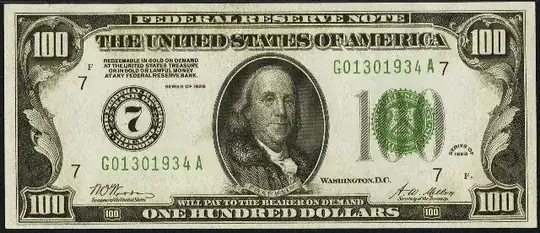
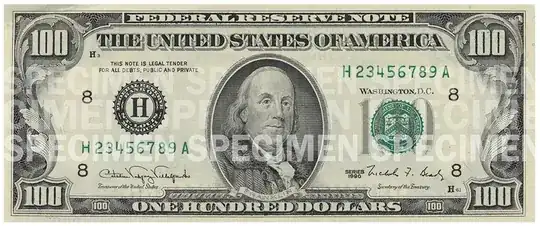
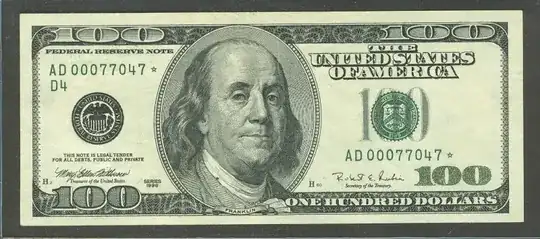
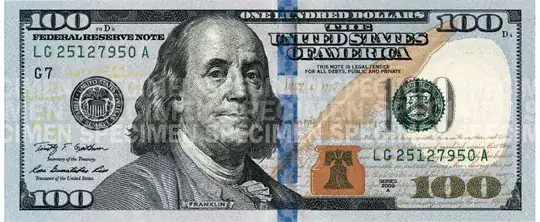
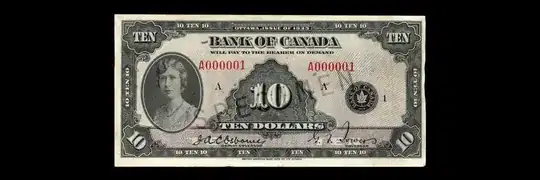
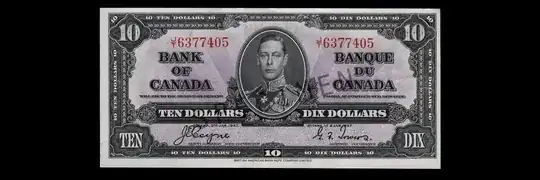
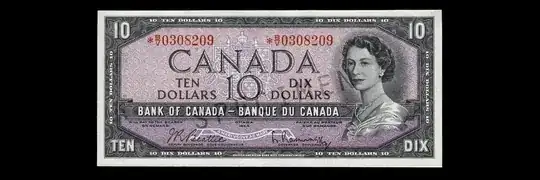
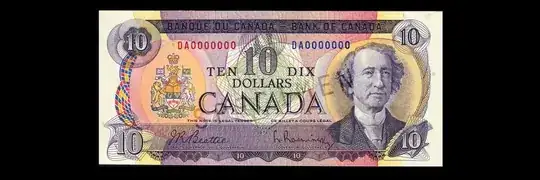


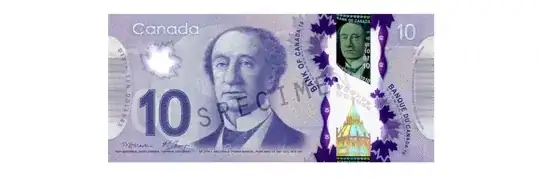

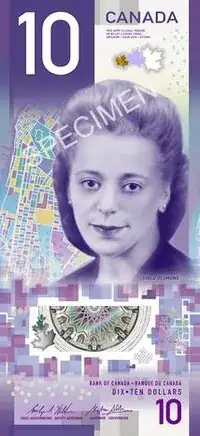
Lets sayimplies that this is a "what if" question, and not a "how do I design my world" question. The general consensus is that that is off-topic. – Zxyrra Jan 04 '17 at 05:39